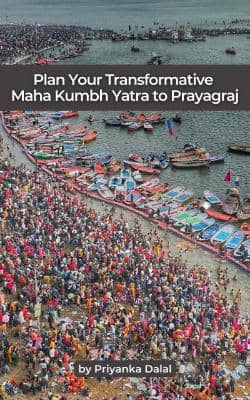A while back I found out about the Hari Om Ashrams in Surat & Nadiad where devotees can go into a few days of maun or silence. Food is provided so devotees are free to spend their entire day by themselves in whatever sadhana and activity they choose. The cost of these rooms are also quite reasonable (about 5 INR per day), thus making it feasible for pretty much anyone from any walk of life to make use of this spiritual support.
There are 9 silence rooms in each of these ashrams of Surat and Nadiad. Vegetarian food is provided daily. One condition in these rooms is no fan or cooling methods, as sweating is considered to be a great cleansing process for sadhakas. Both these ashrams are on the bank of Narmada river. Not only has the founder Hari bhai Mota spent time here, but his Guru Balyogiji Maharaj has also spent time on the land where the Nadiad ashram came up later on.
Official websites of these two ashrams here:
Surat: https://hariommota.org/
Nadiad: http://www.hariomashram.in/
I added these stay places in my spreadsheet with the list for sattvic stay places. You can get your copy by signing up for my email community. So far, it has more than 30 such places of different types and prices to suit different sadhakas. The common denominator across all those places is the supportive intention of the founders towards sadhakas / devotees. Sign up here:
Hari Om Mota, The Enlightened Being to Start these Ashrams
I was curious about Hari Om Mota himself, the enlightened person behind these rooms, and studied his life story. To know what I found, watch my video below. From sleeping in crematoriums, harsh meditations to intense cleansing sadhana and 24-hr japa chanting – Hari Mota was a really surprise for me.
Another Nath Sampradaya Yogi
Earlier, I had written about Sai Baba and the Nimbargi Sampradaya, both of whom belonged to the Nath Sampradaya. Not sure what is the Nath Sampradaya? Know more in my intro blog: https://maproute.in/a-quick-intro-to-the-nath-sampradaya/
Hari bhai Mota also most likely belongs to the Nath Sampradaya (though this hasn’t been confirmed from official sources yet). Sai Baba was one of Hari Mota’s Gurus and the other one was Dhuniwale baba. Considering both of them, it seems quite likely that this is Nath Sampradaya.
Shirdi Sai Baba: https://maproute.in/curate-your-shirdi-sai-baba-trip-one-stop-blog-post/
Nimbargi Sampradaya: https://maproute.in/nimbargi-sampradaya-pilgrimage-trail-nath-tradition-nisargadatta-maharaj-lineage/
Silent Room in Kumbakonam
The two ashrams set up under the guidance of Hari Mota in Surat & Nadiad are more known but there is a third one also. There is a single room in Kumbakonam that Hari bhai set up in similar way – as a silence room on the banks of Kaveri river. I am not sure if it is still functional as I don’t see a clear note on how to book on their website. But I found a devotee’s blog where he has mentioned spending 13 months in the silent room of Kumbakonam. Read his account here: https://www.hariomhariom.com/chanting-hari-om/chanting-hari-om-v1-4/solitude-room-kubakonam-tamil-nadu-india/ As per this record, this Kumbakonam room is also darkened out. So, that makes it silent sadhana in dark rooms. That’s a notch more intense I would say.
All in all, I am happy to find out about these spiritual spaces and also Hari bhai’s life. Let me know if you have any thoughts around these silence rooms or Hari Mota’s tough sadhana life or anything else 🙂



0 Comments